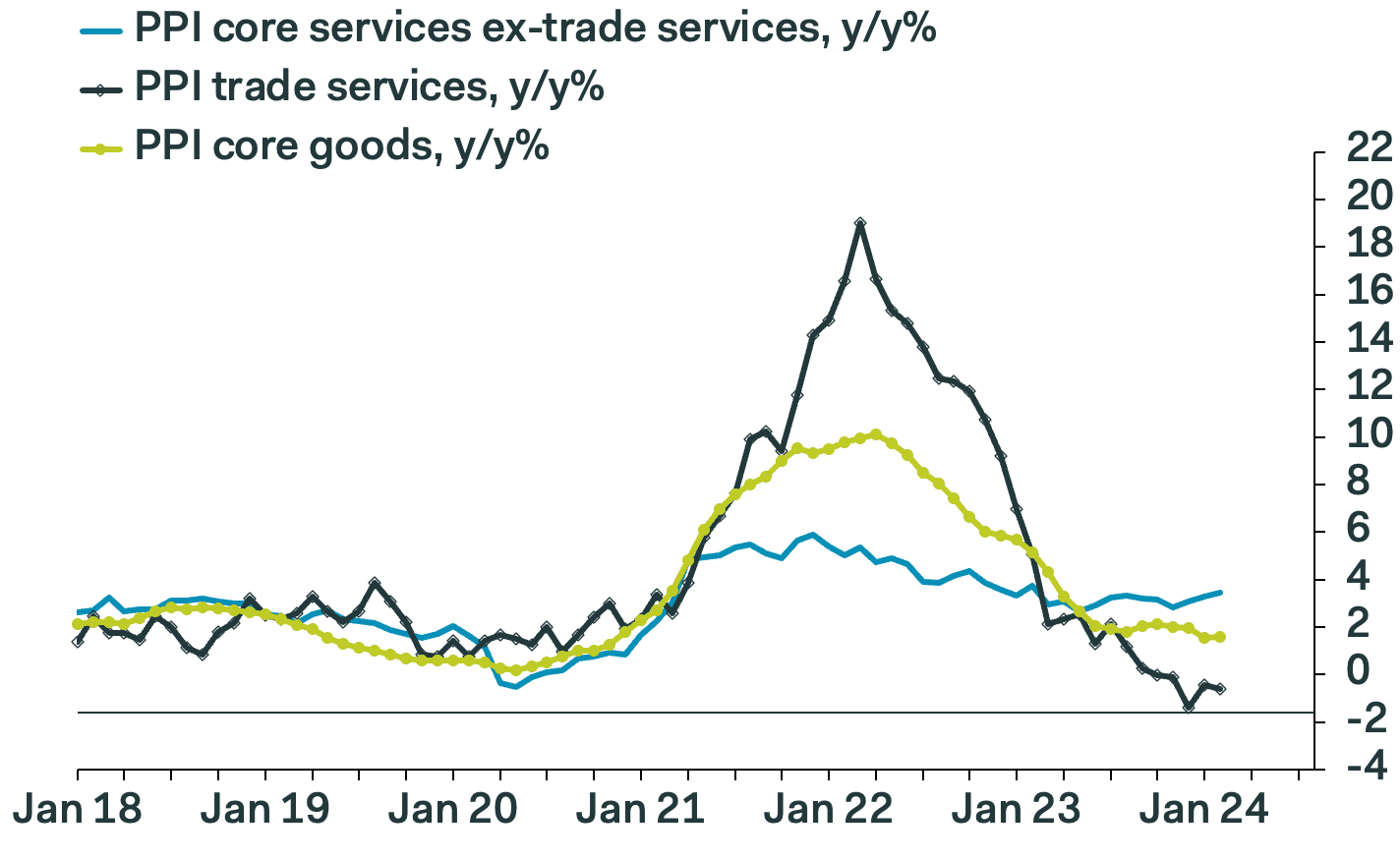"Brewing Bullish Momentum for the Dollar" as PPI Inflation Prints Hot
- Written by: Gary Howes

Image © Adobe Images
Another surprisingly robust U.S. inflation release has aided dollar exchange rates and points to "brewing bullish momentum," according to one analyst.
The GBP/USD exchange rate has forfeited earlier gains and is 0.18% lower on the day at 1.2770 after the U.S. Producer Price Index rose 0.6% month-on-month in February, more than doubling January's and the consensus expectation at 0.3%.
PPI shows cost inflation at U.S. manufacturers and primary services providers and can indicate building pipeline pressures in the headline Consumer Price Index reading of inflation.
Today's data are therefore likely to add to concerns at the Federal Reserve that the process of disinflation has stopped and that interest rates might have to stay at current levels beyond mid-year.
"There is a durable sideways trend emerging in headline inflation, and Powell is running out of time to bridge the confidence gap before the June meeting," says Kyle Chapman, FX Markets Analyst at Ballinger Group.
GBP to USD Transfer Savings Calculator
How much are you sending from pounds to dollars?
Your potential USD savings on this GBP transfer:
$318
By using specialist providers vs high street banks
The PPI data, when combined with Tuesday's unexpectedly firm CPI data, could convince Fed policymakers to raise their forecasts for the outlook of Federal Reserve interest rates at next week's meeting (this is done on a dot plot chart, which is a key signaller the Fed utilises).
"The PPI data suggests that inflation is moving in the wrong direction to justify rate cuts, and this could lead to inflation upgrades to the Fed’s forecasts next week, and also a reduction in rate cuts expected this year in the Fed’s dot plot," says analyst Kathleen Brooks at XTB.
Chapman says only a couple of forecast changes are needed to tilt the dots towards two cuts or even less next week. "We think there is some brewing bullish momentum for the dollar in the near term that the markets are resisting," says Chapman.
Image courtesy of Pantheon Macroeconomics.
Foreign exchange markets have been relatively calm during 2024 as investors bet the major central banks will start cutting interest rates around mid-year and pursue a similar trajectory thereafter.
The risk to this low volatility environment is if this synchronicity breaks down, creating a clear divergence in interest rates, which can prompt fresh FX market trends.
If the Fed delays and the ECB and Bank of England proceed with cuts first, the Dollar would likely strengthen notably against the Euro and Pound.
However, Ian Shepherdson, Chief Economist at Pantheon Macroeconomics, says it is too soon for the Fed to panic, noting that the headline was boosted by an unexpected 1.0% jump in food prices, which likely won’t be repeated.
Energy prices also rose sharply and we should expect an undershoot to expectations in next month's data.
Retail sales figures for February, released alongside the PPI numbers, also offered a reason to stay calm.
Headline retail sales rose 0.6% m/m in February, below the 0.8% expected. When autos are excluded, the figure was 0.3%, which was below the 0.5% expected.
"The American consumer might be showing some signs of fatigue," says Ali Jaffery, an economist at CIBC Capital Markets. "While weather may have impacted last month’s reading, downward revisions on total retail sales and a smaller than expected rebound this month could be a sign of a return to a more normal pace of consumption."
Consumption is a key driver of inflation, and should it ease over the coming months, inflation can too.





